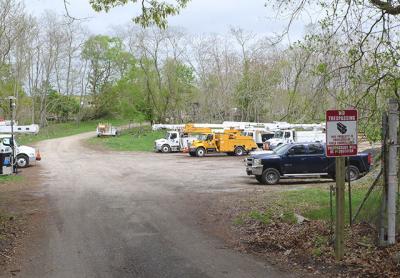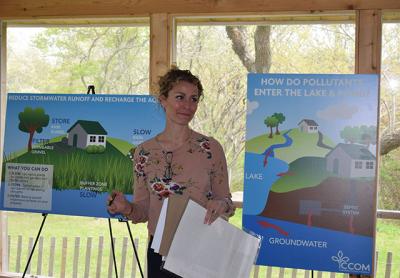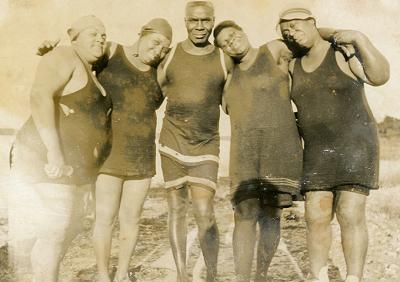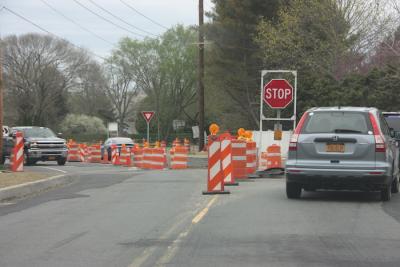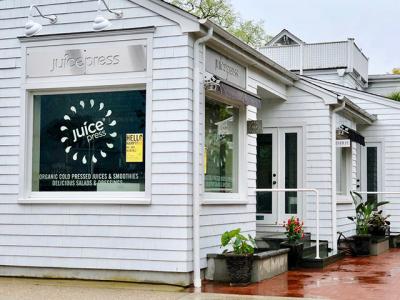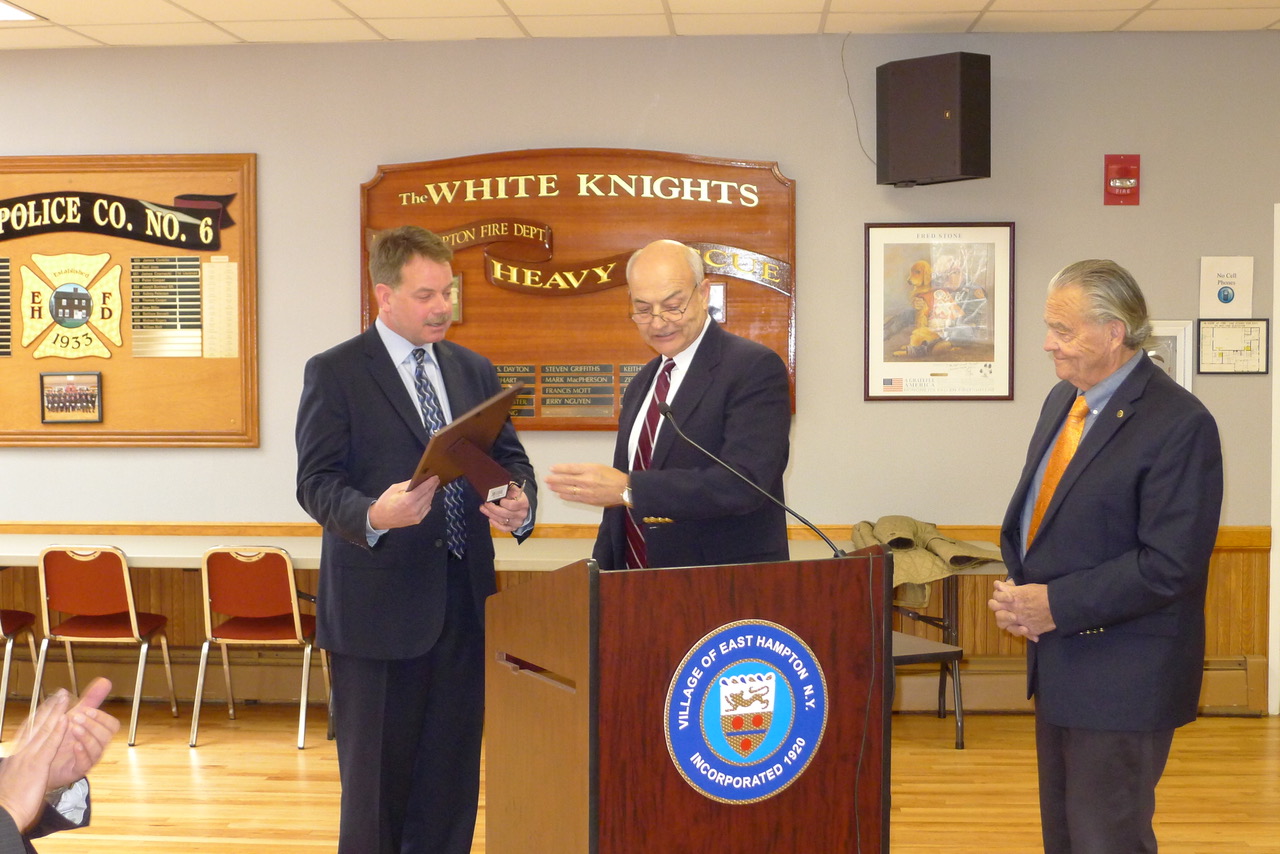No Love for Neighbor’s Tennis Plan
No Love for Neighbor’s Tennis Plan
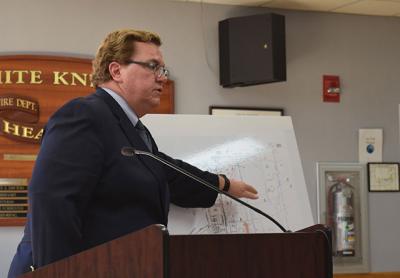
A proposal for a tennis court on West End Road in East Hampton Village — and the inevitable noise that would emanate from it — has rankled the would-be developer of an adjacent parcel on Georgica Cove.
“The best word I can come up with is it would be devastating,” Bruce Lifton said Friday of Edward Conard’s plan for the court at 30 West End Road.
Mr. Lifton owns a neighboring 1.6-acre parcel at 26 West End Road.
Mr. Conard, a former managing director at Bain Capital and author of the best sellers “The Upside of Inequality: How Good Intentions Undermine the Middle Class” and “Unintended Consequences: Why Everything You’ve Been Told About the Economy Is Wrong,” bought the 1.1-acre lot at 30 West End Road from Mr. Lifton in 2016 for $12 million.
Both properties were part of a block of four that once belonged to Courtney Ross. The music and film mogul David Geffen bought all four in 2014 and sold them two years later to Mr. Lifton, who sold the vacant lots at 20 and 24 West End Road to another buyer for a total of $24 million.
On Mr. Conard’s narrow parcel, a pre-existing nonconforming house dating to the 1920s — once Ms. Ross’s guest house — is situated just 1.3 feet from the western property line. As proposed, a portion of the tennis court would fall within the front and side-yard setbacks on what is a comparatively small lot in the neighborhood.
Next door, Mr. Lifton has demolished the original house at 26 West End Road and intends to develop the now-vacant property, which is on the market for $23.5 million.
Because the village’s zoning code requires any new structure to be at least 150 feet from wetlands, a new house at Mr. Lifton’s property would be directly adjacent to the proposed tennis court at #30, a fact that both Mr. Lifton and his attorney, Michael Walsh, emphasized to the board.
“I’m short on words because I stand here before you scared,” Mr. Lifton said during the zoning board hearing on the application Friday. If Mr. Conard’s plans are allowed to proceed, “anywhere I build my home, I’m next to a tennis court. It totally sucks the enjoyment . . . out of my property.”
“I stand here before you shaking,” said Mr. Lifton. “I’ll be the guy next to the tennis court. . . . I beg you to deny this.”
Mr. Conard has offered mitigation in the form of a sound-attenuating fence around the court that would likely be camouflaged by vegetation, an upgrade to the property’s sanitary system, and removal of the septic system and half-bathroom from a children’s playhouse on the property.
His attorney, Leonard Ackerman, submitted a study of the neighborhood showing that several properties in the immediate vicinity feature tennis courts, and a separate report pertaining to noise. The variance relief requested is minial, he said, and the tennis court would be 900 square feet smaller than the standard 7,200 square feet.
But the neighborhood study undercut, rather than supported, an argument for variance relief, said Lys Marigold, the zoning board’s vice chairwoman, “because it shows how much, much, much, much smaller the property is versus the other ones” that feature a tennis court. And those courts, “to our knowledge, didn’t require variances,” said Frank Newbold, the board’s chairman.
“You have a very small, narrow piece of property,” Ms. Marigold said. “You basically are going to walk outside the house and fall into the tennis court.”
Is that a ground for denying the application? Mr. Ackerman asked. “To Lys’s point,” Mr. Newbold said, “sometimes a lot is, maybe, too small for a tennis court.”
“You were told that the character of the neighborhood is large lots, and that there are a number of tennis courts in the neighborhood, and that because of that fact, this one-acre lot has sufficient area” for a court, Mr. Walsh said. In fact, he said, of the 22 waterfront lots in the neighborhood, the only one on the Georgica Cove side of West End Road with a tennis court is four times larger than 30 West End Road, and the other lots with tennis courts are two and a half acres or larger. “The fact of the matter is, this is one of the two smallest lots in the entire neighborhood,” he said.
Mr. Conard also owns an adjacent two-acre property at 36 West End Road, west of #30, which he purchased in 2002.
Mr. Walsh presented a composite map of Mr. Conard’s adjoining lots. “The first observation that we made was that 100 percent of that tennis court is located in the principal building envelope on this one-acre lot,” he said. “The only reason this tennis court can be sited on this lot at all is because of the gross nonconformity of the house,” he added, pointing to its proximity to the western property line. “But for that nonconformity, there is zero location on this lot for a tennis court, none whatsoever.” To site the court in its proposed location, “you’re creating a much greater nonconformity.”
Further, he said, Mr. Ackerman’s report on noise did not address the real issue. “A tennis court has three noises,” he said. “The thwock of a ball being hit by a racket,” often at an elevation greater than the height of the proposed sound-attenuating fence; “the bounce of the tennis ball on the court. . . . And then you have the noise of the players . . . it’s called a ‘tennis grunt.’ ” The report, he insisted, “really tells us nothing apropos of tennis.”
There is sufficient space on Mr. Conard’s larger, adjoining property for a tennis court that would not require variance relief, Mr. Walsh said, as well as a thick hedge and a thick row of trees or bushes that would minimize noise impacts on the adjoining property to the west. The village’s zoning code “compels a denial of this application,” he said.
The hearing was left open and is scheduled to resume at the board’s next meeting, on June 8.
In other news, the board announced seven determinations at Friday’s meeting. The board approved Maidstone Club’s application for a special permit and variances to build a 676-square-foot warming hut for its paddleball courts, legalize two storage sheds, and permit 100,000 square feet more of lot coverage than is legally pre-existing at 50 Old Beach Lane. The approval was conditioned on the placement of shields on the courts’ exterior lighting in compliance with a design review board determination.
The board granted Jonathan Schulhof and Kimberly Kravis variances to legalize a generator and air-conditioning condenser within the front-yard setback at 101 Georgica Close Road.
The Ann Tiernan Article XI Trust was granted variances allowing reconstruction with alterations of a swimming pool and pool house at 15 Gould Street. The pool falls within side and rear-yard setbacks, and the pool house is one foot taller than the maximum permitted for accessory structures.
The board granted George and Lauren Dempsey variances to permit construction of a swimming pool that will result in 3,046 square feet of lot coverage at 7 Church Street, where 2,500 square feet is permitted under current code and the pre-existing coverage is 2,669 square feet.
Lawrence and Leslie Hillel were granted variances to permit 2,275 square feet of coverage to accommodate a shed and terrace, where the maximum permitted lot coverage at 1 Palma Terrace is 1,963 square feet, and for the shed to fall within the side-yard setback. Mr. Hillel, a member of the board, had recused himself from the hearing.
William and Tracy Grathwohl were granted variances to construct additions to a pre-existing, nonconforming detached garage in the front yard at 67 Georgica Close Road, and to legalize an arbor. The garage will be larger and taller than is permitted by code, and the arbor falls within the required side-yard setback. The board attached the conditions that a half-bathroom will be removed, a stairway to the second floor will be replaced with a pull-down ladder, that there will be no second floor in the proposed additions to the garage, and that it is maintained only as attic storage space.
The board granted Jamie Coy Wallace a variance to permit construction of an addition, a swimming pool, decking, and a detached garage resulting in approximately 500 square feet of lot coverage beyond what is permitted at 56 Mill Hill Lane.

